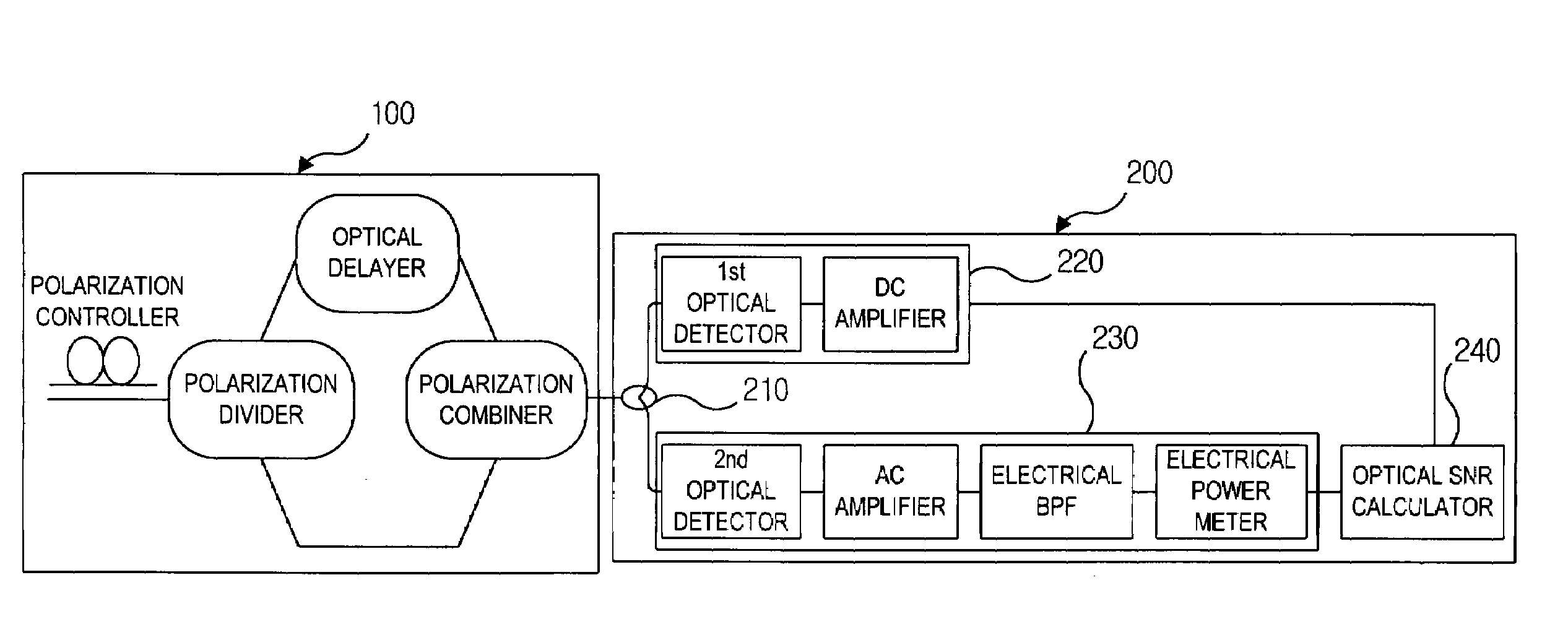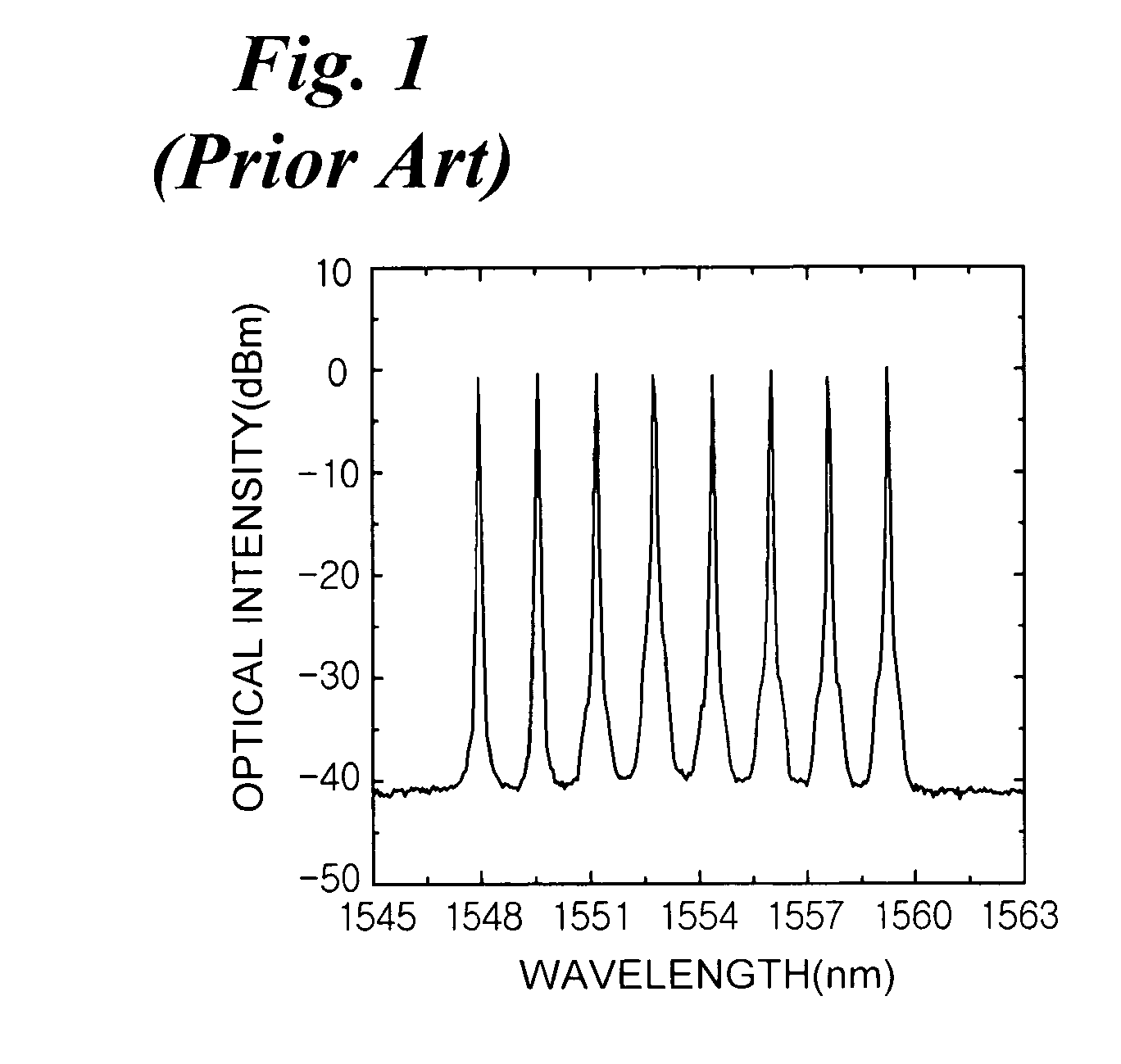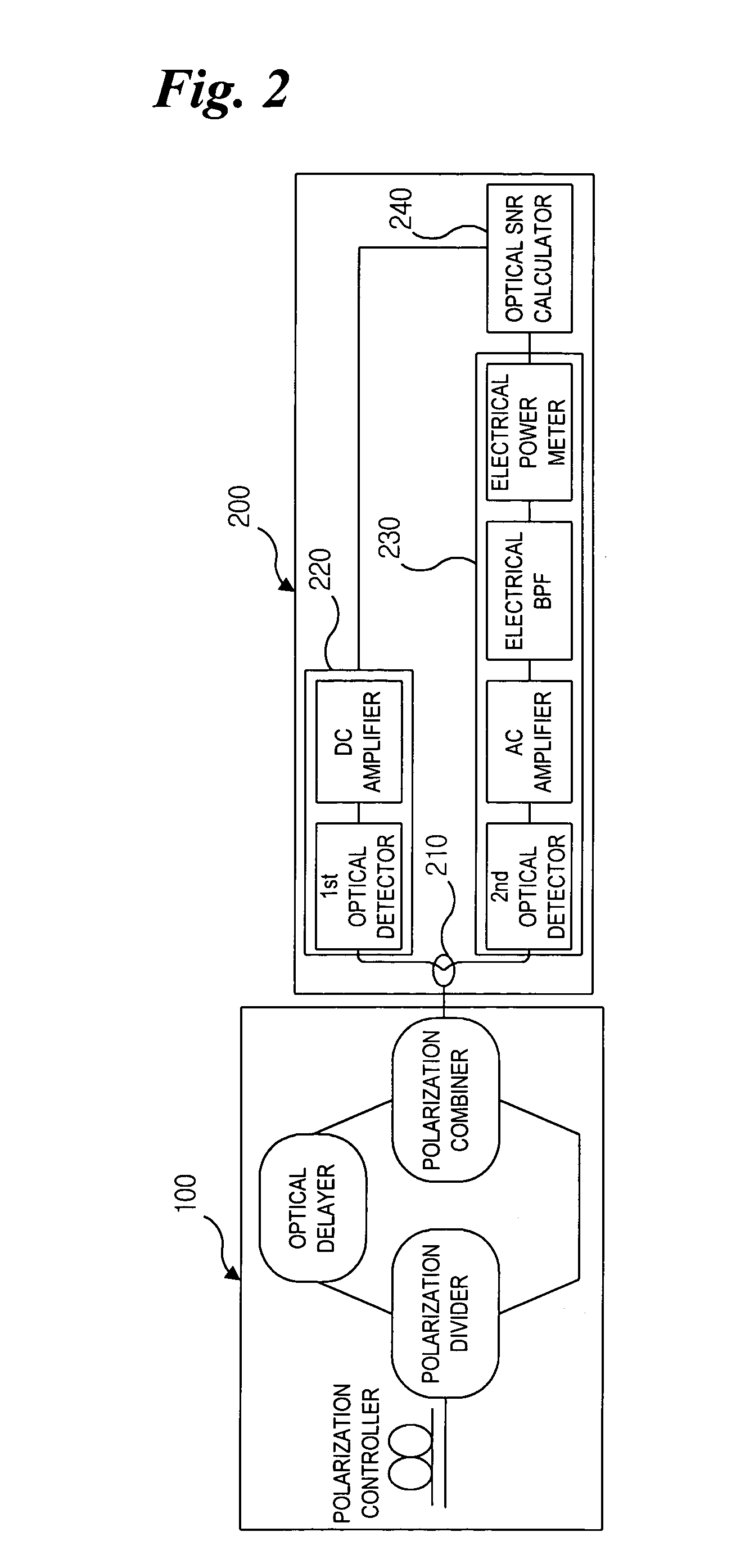Apparatus for monitoring optical signal-to-noise ratio
a technology of optical signal and antenna, which is applied in the direction of transmission monitoring, multimode transmission, fibre transmission, etc., can solve the problems of reducing the performance of optical signals, reducing the optical signal-to-noise ratio, and high cost, so as to effectively operate, maintain and manage a wdm optical network
- Summary
- Abstract
- Description
- Claims
- Application Information
AI Technical Summary
Benefits of technology
Problems solved by technology
Method used
Image
Examples
embodiment 1
[0031]As shown in FIG. 2, the apparatus for monitoring the optical signal-to-noise ratio according to the first embodiment of the present invention includes an orthogonal polarization component module 100 and calculation means 200.
[0032]The orthogonal polarization component module 100 includes a polarization controller, a polarization divider, an optical delay element and a polarization combiner. The polarization controller receives an optical signal, and outputs it to the polarization divider while controlling first and second polarization components thereof perpendicular to each other to have the same intensity. The polarization divider receives the optical signal outputted from the polarization controller, and divides it into the first and second polarization components, and then outputs them. The optical delay element receives one of the first and second polarization components and delays and outputs the received one. The polarization combiner receives the two polarization compo...
embodiment 2
[0039]FIG. 3 illustrates the configuration of an apparatus for monitoring an optical signal-to-noise ratio according to a second embodiment of the present invention.
[0040]As shown in FIG. 3, the apparatus for monitoring the optical signal-to-noise ratio according to this embodiment includes an orthogonal polarization component module 100 and calculation means 300. The configuration and operation of the orthogonal polarization component module 100 in this embodiment is the same as that of the first embodiment, and a description thereof will thus be omitted in this embodiment.
[0041]The calculation means 300 includes an optical detector 310, an electrical intensity divider 320, average signal intensity measurement means 330, noise intensity measurement means 340 and an optical SNR calculator 350.
[0042]The optical detector 310 receives an optical signal outputted from the orthogonal polarization component module 100, and converts the received optical signal into an electrical signal and...
PUM
 Login to View More
Login to View More Abstract
Description
Claims
Application Information
 Login to View More
Login to View More - R&D
- Intellectual Property
- Life Sciences
- Materials
- Tech Scout
- Unparalleled Data Quality
- Higher Quality Content
- 60% Fewer Hallucinations
Browse by: Latest US Patents, China's latest patents, Technical Efficacy Thesaurus, Application Domain, Technology Topic, Popular Technical Reports.
© 2025 PatSnap. All rights reserved.Legal|Privacy policy|Modern Slavery Act Transparency Statement|Sitemap|About US| Contact US: help@patsnap.com



